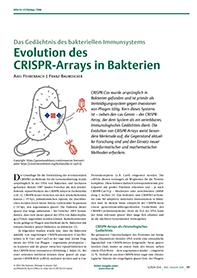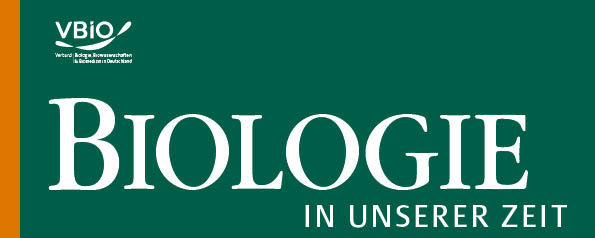The evolution of the CRISPR array in bacteria
DOI:
https://doi.org/10.11576/biuz-7598Keywords:
Evolution, CRISPR-Array, leader, repeats, spacer, Bakterien, Phagen, bakterielles Immunsystem, mathematische Modelle, StammbaumAbstract
Bacteria harbour a remarkable immune system with an inheritable memory known as the CRISPR array as part of their DNA. This array acquires new segments - so called “spacers” – which correspond to segments of invasive phages. Thus, the array allows to infer a chronological sequence of infections by bacteriophages. However, being a part of bacterial DNA, the array cannot grow indefinitely and therefore spacers must get lost again. Whereas the mechanism of spacer acquisition is fairly well understood, little is known about how spacers are deleted. However, studying the array requires new mathematical models that provide new clues as to how these processes take place.

Downloads
Published
How to Cite
Issue
Section
License
Copyright (c) 2024 Axel Fehrenbach, Franz Baumdicker

This work is licensed under a Creative Commons Attribution-ShareAlike 4.0 International License.

